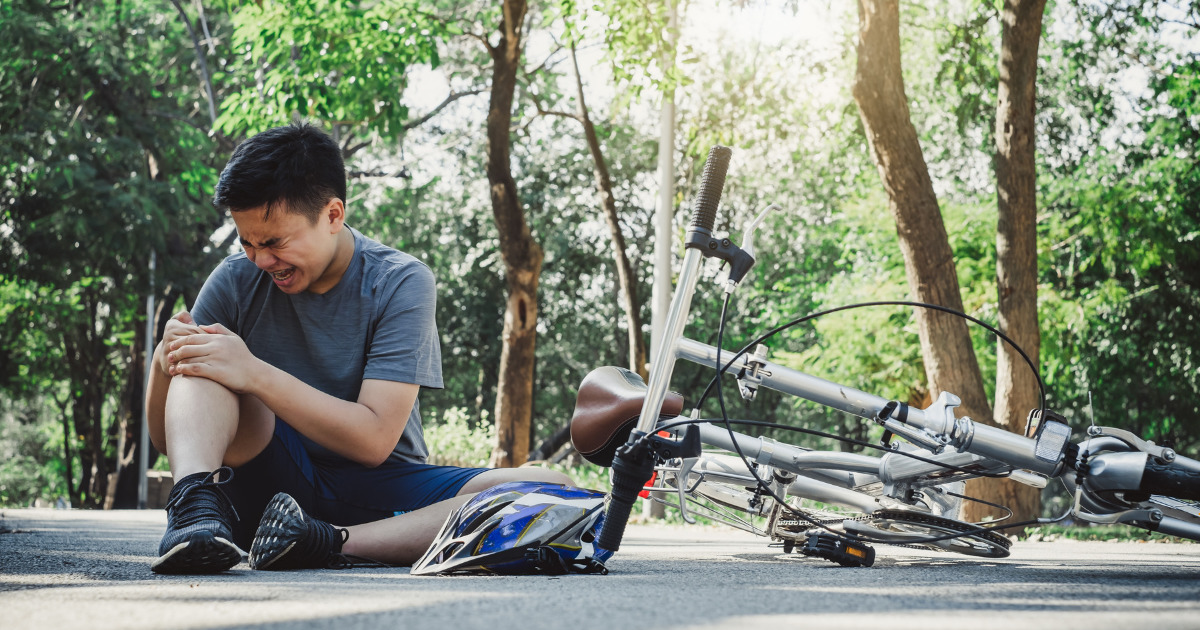Common Cycling Injuries Can Be Avoided.
Most common cycling injuries can be avoided. Unfortunately, we do not have full control of sudden impact injuries; accidents happen. Covid-19 changed our transportation habits. With more cyclists on the road, there are more chances of car-to-bike accidents and bike crashes. The lowest cost and the simplest way to prevent the most common injury ( head trauma) is to wear a helmet. This post is focusing on the conditions which we can control.
Hand and Wrist Pain in Cyclists.
The weight distribution on the bike should be such that 60 percent of the weight is positioned on the rear of the bike. If the seat post is too high or the handlebar is too low, then your arm and wrist take undue pressure. This results in too much weight at the front of your body. If the handlebar angle is not set correctly it may force the wrist joint into an abnormal position. This may result in ulnar nerve neuropathy. The ulnar nerve at the wrist level is vulnerable to repetitive injury. The anatomical structure at the wrist level where the ulnar nerve is passing is called the Guyon canal. It is in a unique location where the ulnar nerve is susceptible to compressive injury. Tingling in your Pinky and Ring finger is a sign of ulnar nerve compression. Wrist joint pain is another common condition in cyclists. The low position of the handlebar forces the wrist joint into more extension which in turn accelerates wear and tear of the small carpal bones that evolutionarily are not adopted for weight-bearing.
Spine: Neck and Lower Back Pain in Cyclists
The low position of the handlebar forces the rider to hyperextend their neck to look up in order to see what is ahead. It causes compression in the cervical spine and creates muscle imbalance between the muscles in the front and the back of the neck. One possible solution to alleviate pressure on your arms is to opt for a compact or shallow handlebar. You can also adjust your handlebar position by loosening the stem bolts and rotating the stem bar upwards. This will reduce your arm’s reach.
Lower back pain in cyclists is the most common injury. A recent study has found that 58 percent of all cyclists experienced lower back pain in the previous 12 months. Because cycling is a low impact sport, it is surprising as to why the lower back pain is so common among cyclists. There are 2 possible reasons: incorrect bike geometry and muscular insufficiency. If you are planning a long time in the saddle make sure that your bike is properly fitted. There are professional services that can perform this job. Your bike is not at fault.
Muscular insufficiency can be addressed in physical therapy. Sitting in the saddle for a long time causes the muscles behind your back, hamstrings, and calves to naturally shorten. It changes the length-tension ratio of the muscles and creates multiple issues affecting your lower back. Prolonged pedaling causes fatigue and produces undesirable muscle movement patterns in the legs and spine. It affects your back by altering the spinal posture. Lower back pain in cyclists is associated with excessive lumbar spine flexion, which in turn is associated with the reduced activity of a key stabilizer back muscle- multifidus, located in the deep layer of your back. A comprehensive lower extremity stretching program and a core stabilization program for cyclists are of paramount significance in preventing lower back dysfunction.
Knee Pain and Possible Quick Fixes.
Before you consult a medical provider for the knee pain from cycling, check your bike fit.
Pain in the front of your knee is a result of a powerful and continuous force that your quadriceps muscles exert on your knee cap. The force could be detrimental if it is applied at the wrong angle and direction. Bike fitting issues like saddle height, saddle fore, and crank length affect the pressure on your knee cap by producing an abnormal force. If the saddle is not properly adjusted in the vertical and horizontal direction the force is increased, causing more irritation. All those issues could be avoided. Understanding the basic principles of biking mechanics can save your time looking for remedies and let you enjoy the things you love to do!
But if you need us, Physical Therapists at Park Sports have a unique understanding of the mechanical aspect of cycling. We are passionate about cycling and some of our team members are advanced level multi-sport athletes that include cycling. Our office is located at Prospect Park, a major cycling venue in Brooklyn. We are here to help!
.png?auto=format&auto=compress&h=150)
